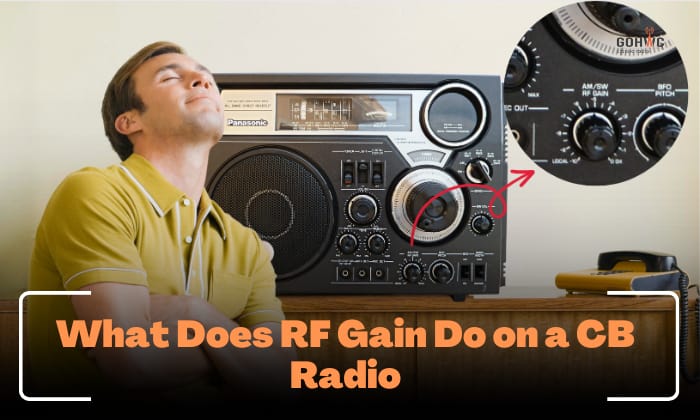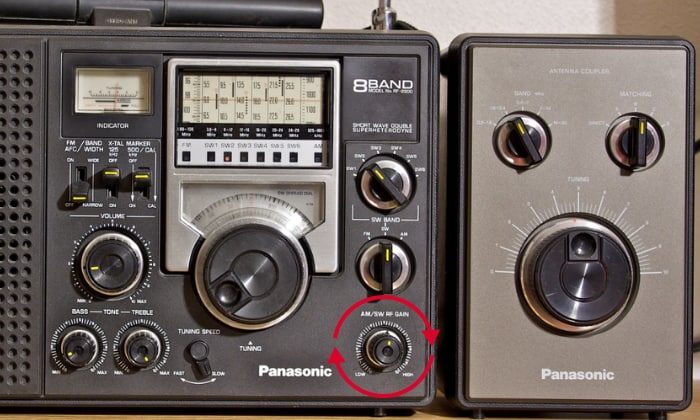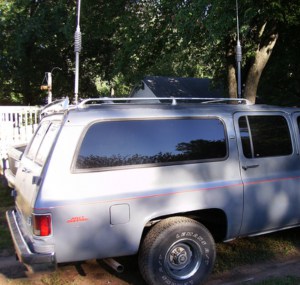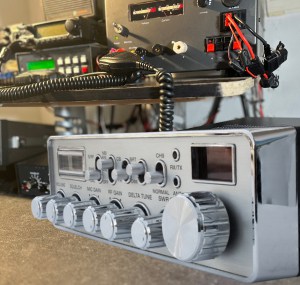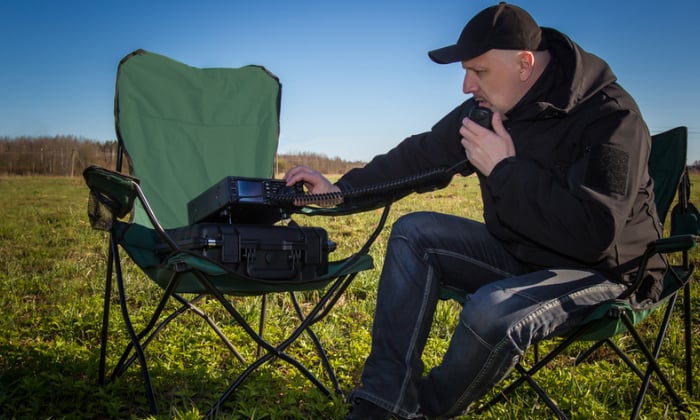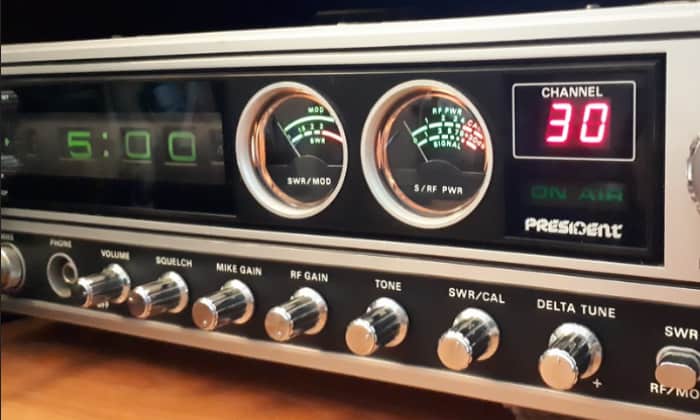What does RF gain do on a CB radio? For your information, RF gains are signal modifiers, which help us hear a radio signal more clearly.
If you turn the RF again all the way to the right, you’ll be able to hear more signals from faraway people. On the other hand, if you turn it all the way to the left, you’ll have a clearer signal of a nearby person.
Contents
What is RF Gain?
In terms of the RF gain definition, RF means ‘radio frequency,’ which is the radio waves transmitted into the radio. Alternatively, gain means ‘the amount of amplification added.’
Together, the RF gain is defined as a control setting in your CB radio that amplifies or modifies the sensitivity of the radio signals brought into your radio to reduce or increase the signal quality.
Benefits of Using RF Gain
When there are many signal interferences, RF gain on CB radios can help you avoid hearing these noises. Here are some of the advantages of using the RF gain control setting.
- Static Reduction: When you’re receiving a lot of signals, the static also increases. Lowering your RF gains can help you reduce these.
- Better Signal Reception: RF gain can help you get better signal reception by putting it at the highest level to reach weak signals.
How RF Gain Works
To set the RF gain on a CB radio, you’ll have to consider a lot of factors. In most cases, people would just maximize the RF gain to its fullest. However, this isn’t the best option for this control setting.
But before we dive into that, let’s tackle how CB radios receive radio signals and how to operate them to maximize your signal strength.
1. How CB radios receive signal
CB radios, short for citizens’ band radio, work by transmitting and receiving radio signals from CB antennas. Like any other two-way communication radio, CB antennas capture radio signals, convert them, and send these back out from the CB radio.
You may be thinking that this is somewhat irrelevant to RF gains. But do mind that antennas play a big role in your signal. You won’t be able to properly listen to your radio without tuning your antenna.
For your CB radio to receive a signal, your antenna must be set to the appropriate length. Your SWR (standing wave radio) meter should have a ratio of 1.5:1 when set in Channels 1 and 40. To adjust, your antenna may have a small screw called a ‘tunable tip.’
2. Role of RF gain in signal amplification
With your antenna mounted and your radio set up, you might be confused by various settings on the radio. Common questions include, which control settings am I supposed to set my CB radio? What is RF gain’s role in signal amplification?
If it’s your first time, you might be overwhelmed by the amount of control knobs in your radio. Here’s the most common setting:
- Squelch: Turn the squelch knob just until the background noise can’t be heard anymore.
- RF Gain: Set this to MAX for a wider range. But if it produces so much noise because of a lot of interference, turn it down.
- Mic Gain: Control your mic or your voice’s volume to the receiver. The higher it is, the louder your voice would be to listeners. This is also called ‘dynamike.’
- RF Power: Set this to MAX if you don’t have an amplifier.
3. Optimizing CB radio performance with RF gain
Now that you know how to set up your CB radio, as well as a gist of the RF gain setting, here’s how you can optimize this and further enhance your CB radio listening.
This can be done through the adjustment of your radio’s RF gain. Where should RF gain be set? Here’s how you should set it:
- RF Gain Up
Many people just set up everything at the maximum when it comes to playing with their radio settings. But this isn’t the most efficient way. A higher RF gain means allowing your radio to receive signals from far distances.
At the same time, because it receives a lot of signals, there may be a lot of interference. In such cases, you may have to lower your RF gain down to block these far signals.
- RF Gain Down
You may want to lower the RF gain if you aren’t really planning to use your CB radio to communicate with people at far distances. This is because the more signals you receive, the noisier the background will be. So, it’s better to receive lesser signals to have a clearer reception.
Best Practices and Tips for Using RF Gain
Many might ask, should RF gain be set to maximum for better reception?
Well, to get the sweet spot, you must first turn the RF gain to its maximum. Then, if it’s too noisy, turn it a bit down.
If you have a digital screen that shows your RF gain, you can see how much signal is being received. Turn it back up again to its fullest, and your screen will show up at what number the ‘peak signal’ is at.
Once you’ve identified the peak signal, turn the knob to that setting, say for example– 5, and you’ll have the best reception.
RF Gain vs Squelch
Squelch and RF gain both improve your CB radio’s signal quality. But they differ in many aspects. Here are the functions of each:
1. Functions and applications
We’ve talked about how RF gain receives more signals from faraway places if it’s maxed out and how it gives a clearer reception of nearby signals if it’s lowered down. Squelch almost works just the same as RF gain. But, what squelch does is it filters out all kinds of background noise.
Squelch doesn’t just filter radio signals. It also filters out any noise produced by electricity. For example, your car’s engine may interfere with your signal.
In addition to that, squelch is a control setting you’ll see in all CB radios, whereas the RF gain setting can only be seen in some CB radios.
2. Tips for using both features effectively
When both the squelch and the RF gain are used hand-in-hand, you’ll be able to get the most optimal CB radio signal. To set squelch and RF gain, starting at the lowest setting for each. Then, you’ll want to turn your squelch knob until you hear no background noise.
Once that’s all set, turn the RF gain knob until there’s some noise in the background. Turn this down again until you hear no noise.
Frequently Asked Questions
Can RF Gain Compensate For A Poor-Quality Antenna?
RF gains will never replace poor-quality antennas. Your CB radio’s antennas are one of the most important elements of any kind of radio. These are the ones that receive the radio signals for your CB radio to work, regardless of your RF gain setting.
How Does RF Gain Differ From RF Power On A CB Radio?
RF power is the amount of energy or power brought inside your radio. On the other hand, RF gain is a signal modifier that can decrease or increase the signal power.
Conclusion
We hope that we were able to answer your question, ‘What does RF gain do on a CB radio?’ RF gain helps in providing a better signal reception for your CB radio. Many radios don’t have this control setting. But if you do, use it to your advantage.
Along with the squelch, antenna, and other settings provided above, you could further optimize your CB radio listening experience– lessening those ‘noises’ that you’d always hear in two-way communication radios.

Hello! I am Hart, the content writer and editor here at G0HWC. I used to be in the same local radio club with Howe, and he convinced me to join him in spreading my love for the radio with others. With a background in radio studies, I spend every day crafting accurate, easy to read content on various topics related to owning and using radios. I hope that my content can help you confidently venture in your radio journey!

